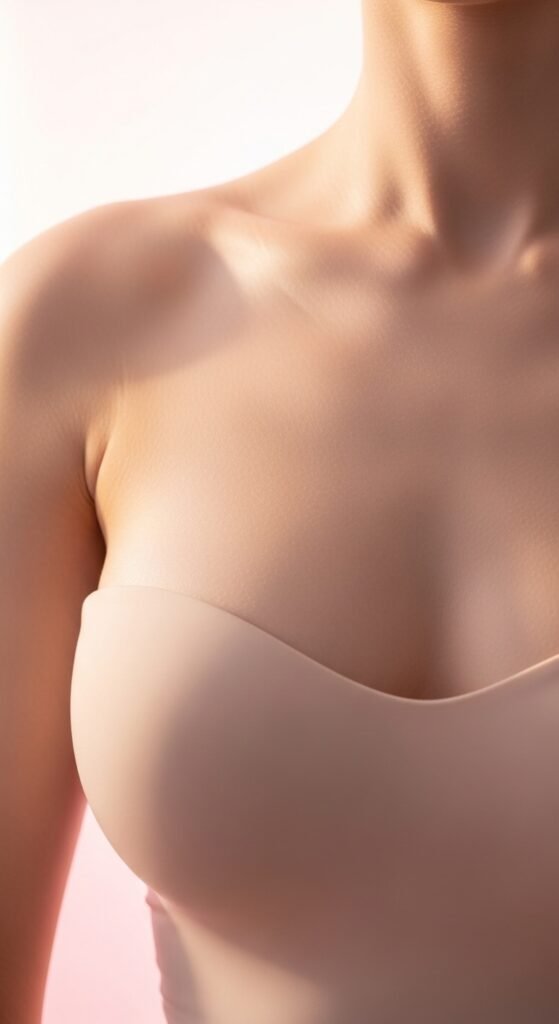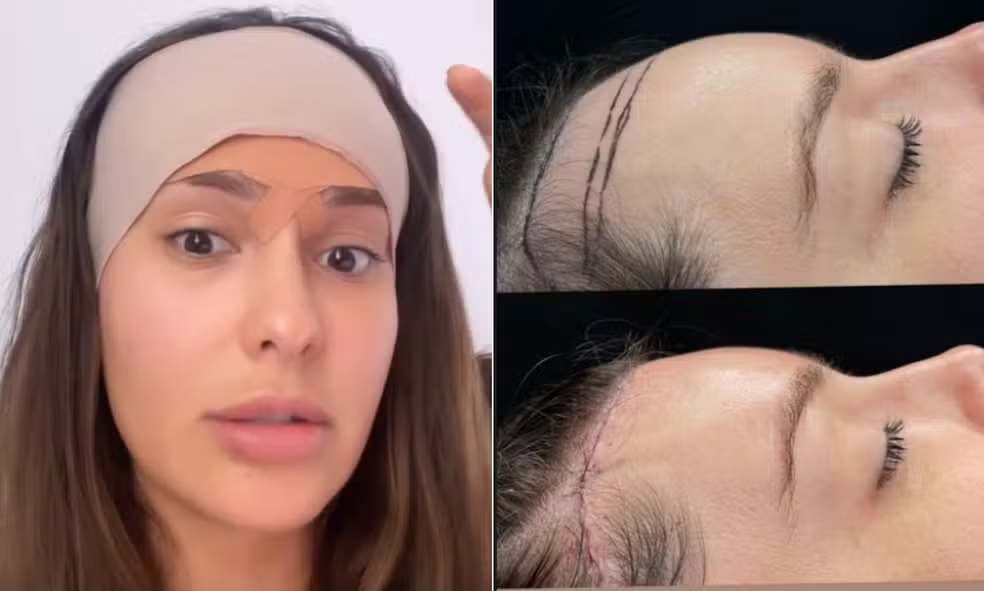Hello!
I’m Dr. June Favarin, a plastic surgeon with almost 20 years of experience in facial surgery, based in Criciúma, Santa Catarina.
Throughout my career, I’ve closely followed the evolution of surgical techniques in facial rejuvenation. And today, I want to tell you about two approaches that, in my practice, have transformed results: video-assisted facelift and Deep Plane.
These techniques are extremely effective when properly indicated and offer natural results, with smaller scars, shorter recovery time, and great long-term satisfaction.
What is the video-assisted facelift?
The video-assisted facelift, also known as endoscopic facelift, is a minimally invasive technique I have been using for over 10 years to treat the early signs of aging, especially in the forehead area and the midface (cheekbones, nasolabial folds, and eyes).
Through small incisions hidden in the scalp, I insert a microcamera that projects high-definition images of the internal facial structures. This allows me to:
- Lift the brow
- Treat lateral eyelid laxity
- Reposition the midface
- Rejuvenate expression with minimal scarring
Who is a candidate for video-assisted facelift?
This technique is ideal for:
- Patients under 50 years old
- Faces with minimal skin sagging
- Thicker skin with good retraction capacity
- Patients who do not want visible cuts or scars in front of the ear
- People who want long-lasting, but not permanent, results
The video-assisted facelift does not replace traditional techniques in cases of significant sagging, but it’s excellent for mild to moderate facial descent.
What is the Deep Plane technique?
The Deep Plane is a deeper and more comprehensive traditional facelift technique. In it, I perform a dissection of the deep facial planes, releasing the ligaments that support the facial tissues, achieving a more effective and longer-lasting lift.
It is indicated for patients with:
- Moderate to significant sagging
- Fuller faces
- Neck with excess skin
- Expectation of a more structured and long-lasting result
Unlike the video-assisted lift, the Deep Plane requires incisions in front of the ear to gain direct access to the deeper facial layers. But when done well, with zero tension on the skin and focus on the deep structures, the scar remains discreet — and the result is worth it.
Difference between video-assisted facelift and Deep Plane
| Feature | Video-assisted Facelift | Deep Plane Facelift |
|---|---|---|
| Type of incision | Small, hidden | In front of and behind the ear |
| Recovery | Faster | Slightly slower |
| Indication | Mild/moderate sagging | Moderate/significant sagging |
| Result duration | 5–7 years | 10–15 years |
| Ideal age | Under 50 years | 50+ years or with more sagging |
| Areas treated | Forehead and midface | Full face and neck |
Each technique has its proper indication. The key is to customize the treatment according to the patient’s anatomy, desires, and lifestyle.
Fat grafting: the secret to natural results
Almost all of my facial surgeries include autologous fat grafting. This means I remove a small amount of fat from areas such as the abdomen or flanks (without performing cosmetic liposuction), process this fat, and reapply it to the face to:
- Correct deep folds
- Fill areas with volume loss
- Improve skin quality
- Soften shadows that create a tired appearance
This graft is done with living cells, giving a natural and lasting effect. Once the fat integrates, it behaves like any other cell in your body — and the effect can last for years.
Plastic surgery with safety: hospital and anesthesia
All of my surgeries are performed in a hospital environment, with full safety structure, monitoring, and a multidisciplinary team.
In addition, I prefer to use intravenous general anesthesia, which is safe, comfortable, and has an excellent recovery profile.
I do not perform video-assisted or Deep Plane facelifts in an office setting or with light sedation, because I prioritize 100% patient safety.
Video-assisted facelift results: what to expect?
The video-assisted facelift does not remove skin — it repositions facial tissues. This means:
- The result is natural and elegant
- The scar is virtually invisible
- Skin may sag again over time (5–7 years)
- The procedure can be repeated or complemented in the future
The Deep Plane, on the other hand, offers a more powerful lift and tends to last 10–15 years, since it removes skin and releases ligaments more extensively.
My philosophy as a plastic surgeon
Above all, I only recommend what the patient truly needs. I have turned down many Deep Plane requests from younger patients because the technique was beyond their needs.
My motto is: if it can be done with video-assisted surgery — with less trauma, smaller scars, and great results — that’s the path. If the sagging requires a more structured approach, then the Deep Plane becomes the ideal tool.
Conclusion: facelift with purpose, safety, and personalization
Facial plastic surgery is evolving — and I evolve with it. Each year, new techniques are established, technology improves, and results become more subtle and longer-lasting.
But what never changes is the care I have for each patient: understanding their anatomy, respecting their expectations, and choosing the best technique for their case.
If you are looking to rejuvenate your face with natural results, discreet scars, and safety, talk to an experienced surgeon who masters both the traditional facelift (Deep Plane) and modern techniques such as video-assisted surgery. I’m here to guide you.
Tags: deep plane, deep plane facelift, deep plane surgery in Criciúma, deep plane rejuvenation, long-lasting deep plane facelift, advanced deep plane technique. Learn more about the procedure with Dr. June Favarin at Criciúma Plastic Surgery, or follow the clinic’s daily updates on Instagram: @clinicabelvivere.





